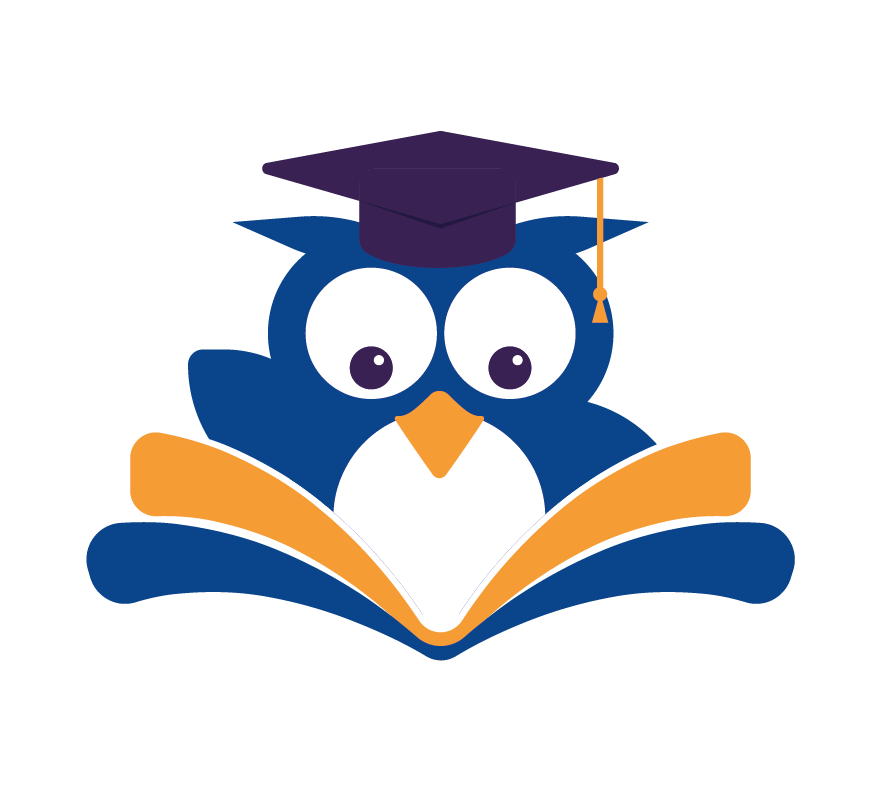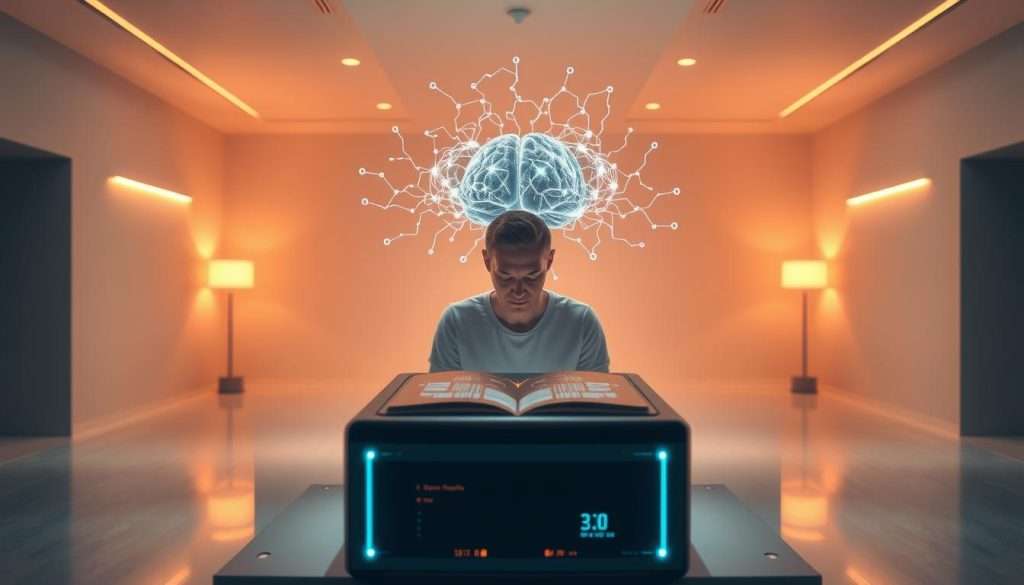Are you ready to unlock your full potential and change your learning journey? We think anyone can become a super learner with the right methods and attitude.
The course “Become a Super Learner: Learn Speed Reading & Boost Memory” aims to improve your learning skills and reach your goals. By using accelerated learning techniques, you’ll learn and remember more easily.
Key Takeaways
- Discover the secrets to becoming a super learner
- Improve your learning skills with practical techniques
- Boost your memory and speed reading abilities
- Unlock your full potential and achieve your goals
- Transform your learning experience with accelerated learning techniques
The Science Behind Super Learning
To become a super learner, you need to understand how your brain works. Our brains are made to learn, but knowing how can enhance memory retention and improve thinking.
How Your Brain Processes Information
When you learn something new, it makes a path in your brain. The more you practice or remember this, the path gets stronger. This is key to cognitive enhancement strategies. As neuroscientist Andrew Huberman says, “The brain is a highly dynamic system, and its ability to change is what allows us to learn and remember.”
The Neuroplasticity Advantage
Neuroplasticity means your brain can make new connections at any age. This idea shows that the brain isn’t fixed. By using neuroplasticity, you can significantly improve your learning abilities. For example, London taxi drivers have a bigger hippocampus because of all the navigation they do. This shows how adaptable the brain is.
| Concept | Description | Benefit |
|---|---|---|
| Neuroplasticity | Brain’s ability to form new connections | Improved learning capabilities |
| Information Processing | How the brain handles new information | Enhanced memory retention |
Assessing Your Current Learning Style
To become a super learner, it’s key to know your learning style. Understanding how you learn best helps you grasp and keep new info better.
Identifying Your Learning Preferences
Your learning style comes from how you like to process info. There are a few ways to figure out your style:
- Think about your past learning to see what worked for you.
- Try different learning methods to find what fits you.
Visual, Auditory, and Kinesthetic Learning
Most people lean towards one main style: visual, auditory, or kinesthetic. Visual learners do well with pictures and diagrams. Auditory learners get it from sound and music. Kinesthetic learners learn best by doing things with their hands.
Multimodal Learning Approaches
Some people do well with a mix of styles, called multimodal learning. Using different learning methods can help you remember and understand better.
Recognizing Learning Obstacles
It’s important to spot any learning hurdles. Common ones include distractions, lack of motivation, and bad time management. Knowing these challenges lets you find ways to beat them and do better in learning.
Mindset Shifts to Become a Super Learner
Your mindset is the key to unlocking accelerated learning techniques. To maximize your learning potential, you must be open to new ideas. Becoming a super learner means being ready to learn and adapt all the time.
Embracing the Growth Mindset
Adopting a growth mindset is key. This idea, brought up by Carol Dweck, shows that your abilities can grow with effort. Believing your intelligence can grow makes you more ready to face challenges.
Overcoming Learning Anxiety
Learning anxiety can hold you back. To beat it, you need to handle information overwhelm well. Here are some tips:
Techniques for Managing Information Overload
- Prioritize information based on relevance and importance.
- Break down complex topics into manageable chunks.
- Use tools and apps to organize and filter information.
Building Learning Confidence
Building learning confidence is about celebrating small wins and being kind to yourself. It’s vital to have a supportive learning space that encourages growth.
By changing your mindset and using these strategies, you can reach your full potential. It’s a journey that needs patience, persistence, and a desire to learn.
Creating Your Optimal Learning Environment
To become a super learner, you need to optimize your study environment. Your surroundings greatly affect your ability to focus and learn. By making your learning space the best it can be, you’ll improve your effective study habits.
Let’s look at how to make both your physical and digital spaces better for learning.
Physical Space Optimization
Your study space should be comfy, quiet, and free from distractions. Make sure it’s well-lit and at a good temperature. Keep your tools and materials organized and within reach. This makes your physical space better for learning, a key cognitive enhancement strategy.

Digital Environment Management
Managing your digital space is just as crucial as your physical one. It’s about cutting down distractions and using tools that help you focus.
Minimizing Distractions
Turn off notifications or use “Do Not Disturb” mode. Use website blockers like Freedom or Cold Turkey to block distracting sites. These steps help you focus better.
Tools for Focus Enhancement
Apps like Forest or Focus@Will can keep you on track. These tools are part of your cognitive enhancement strategies. They help you stay focused and reach your learning goals.
| Tool | Description | Benefit |
|---|---|---|
| Freedom | Blocks distracting websites and apps | Enhanced focus |
| Forest | Grows a virtual forest as you stay focused | Motivation to stay on track |
| Focus@Will | Provides music for concentration | Improved concentration |
Memory Enhancement Techniques
Improving your memory is easier than you might think. It’s a key step to becoming a super learner. Methods like the Method of Loci and Spaced Repetition Systems can enhance memory retention. Let’s dive into these techniques to unlock your full potential.
The Method of Loci (Memory Palace)
The Method of Loci, or Memory Palace, uses a familiar place to remember things. You link items to specific spots in your mind. This old trick still works today, making it easy to recall information. As Joseph Spence said, “The art of memory is the art of attention.”
Spaced Repetition Systems
Spaced Repetition Systems (SRS) boost memory. They review material at longer intervals to lock it in your long-term memory.
Digital SRS Tools
Digital tools like Anki and Quizlet make SRS easy. They help you create digital flashcards and follow a spaced repetition schedule.
Creating Effective Flashcards
For SRS to work best, make effective flashcards. Keep them simple and focused on key info. Use simple, clear language and avoid too much clutter.
Mnemonic Devices That Work
Mnemonic devices are great for enhancing memory retention. Acronyms, rhymes, and mind maps link new info to what you already know. This makes it easier to remember.
Using these techniques in your learning can greatly improve your memory. As
“The more you know, the more you realize you don’t know, but the more you want to know.”
This curiosity keeps us learning and improving.
Speed Reading Methods That Actually Work
Discover how to read faster and better with our top speed reading methods. We’ll cover techniques like chunking, reducing subvocalization, and expanding your peripheral vision. These methods can greatly boost your reading speed and understanding.
Chunking and Pattern Recognition
Chunking is a key speed reading technique. It groups words into meaningful clusters. This makes your brain process information more efficiently. Recognizing patterns also helps you predict what’s next, speeding up your reading.
Reducing Subvocalization
Subvocalization is reading words in your head. It slows you down. Focus on the text’s meaning, not individual words. With practice, you can read faster by reducing this habit.
Peripheral Vision Expansion
Expanding your peripheral vision helps you read faster. It lets you see more words at once. Train your eyes to focus on groups of words, not just one at a time.
Progressive Training Exercises
Try these exercises to improve your peripheral vision: Focus on a point, then take in surrounding words without moving your eyes. Use a pointer or finger to guide your eyes, focusing on groups of words.
Measuring Reading Speed Improvements
Track your progress by timing yourself reading passages. Calculate your words per minute (wpm). Use this table to see how you’re doing:
| Date | Reading Time (minutes) | Words Read | WPM |
|---|---|---|---|
| Day 1 | 5 | 1000 | 200 |
| Day 7 | 4 | 1000 | 250 |
| Day 14 | 3 | 1000 | 333 |
By practicing these methods regularly, you’ll see big improvements in your reading speed and comprehension. Stay committed, and you’ll soon be reading like a pro!
Effective Note-Taking Strategies
Starting your learning journey? Mastering note-taking can really help you understand and remember more. It’s a key skill that can greatly impact your learning.
The Cornell Method
The Cornell Method divides your paper into three parts: cues, notes, and summary. This method organizes your thoughts and makes reviewing easier. It helps you remember information better and dive deeper into the material.
Mind Mapping for Conceptual Learning
Mind mapping is a visual way to take notes. It boosts creativity and connects ideas. By mapping out concepts, you grasp complex info better and see how ideas relate. It’s great for learning big ideas and seeing the whole picture.
Digital vs. Handwritten Notes
The debate on digital vs. handwritten notes is still going on. Digital notes are easy to access, but handwritten ones might help you remember and understand better. Your choice depends on what works best for you.
Integrating Visual Elements
Adding visuals to your notes can make learning more fun and engaging. Diagrams, charts, and images clarify complex ideas and make your notes stick in your mind. Visuals turn your notes into a lively, interactive study experience.
Cognitive Enhancement Through Lifestyle
Boosting your brainpower isn’t just about what you learn. It’s also about how you live your life. Your daily habits and lifestyle choices greatly affect your brain function. They influence how well you can learn and remember new things.
Nutrition for Brain Performance
The food you eat is key to brain health. Eating the right foods can boost your brainpower. But, a bad diet can slow it down.
Key Nutrients for Cognitive Function
Some nutrients are great for your brain. Omega-3 fatty acids, antioxidants, and vitamins B6, B9, and B12 are top choices. They help your brain work better and improve memory and focus.
Meal Timing for Optimal Learning
Eating at the right times matters for learning. A balanced meal or snack before studying gives your brain the fuel it needs. This helps you stay focused and retain information better.
Exercise and Sleep Optimization
Regular exercise and enough sleep are vital for a sharp mind. Exercise boosts blood flow to the brain, improving function. Sleep helps solidify memories and clear out brain waste.

Dual Coding Theory in Practice
Learning with both visual and auditory methods can really help. It uses more brain pathways, making it easier to remember and recall information.
The Feynman Technique
Teaching what you’ve learned to others in simple terms can really help. It makes you understand better and shows where you need more practice.
Interleaving Practice
Mixing up different types of material or problems can deepen your understanding. It also makes you better at applying what you’ve learned in different situations.
Practical Applications in Different Contexts
Now that we’ve uncovered the secrets of super learning, let’s explore how to use it in various areas of life. Super learning is versatile, making it useful for school, work, and hobbies.
Super Learning for Academic Success
In school, super learning can make your study sessions better. Using methods like the Method of Loci or spaced repetition can help you improve your retention and recall of complex information. This leads to better grades and less study time.
Professional Skill Acquisition
In the workplace, super learning can change the game for learning new skills or moving to a new field. Techniques like chunking and pattern recognition help you quickly learn new concepts. You can then apply them well in your job.
Personal Development and Hobbies
Super learning also enhances your personal life. It’s great for learning a new language, playing a musical instrument, or trying a new hobby. These techniques can accelerate your progress and make learning fun.
Technology Tools for Accelerated Learning
Today, learners have access to many digital tools that can speed up learning. Technology has changed how we learn. It offers a wide range of resources and tools that make learning better.
Apps and Software for Super Learners
There are many apps and software to help with faster learning. For example, Anki uses spaced repetition to help you remember things better. Readiris can turn PDFs and scanned documents into text you can edit, making studying easier.
Forest is an app that turns staying focused into a game. It grows a virtual forest as you stay on task. Evernote is a note-taking app that helps you organize your thoughts and ideas.
Digital Learning Platforms Worth Exploring
Digital learning platforms have changed how we get educational content. Sites like Coursera and edX have courses from top universities. You can learn at your own speed.
AI-Assisted Learning Tools
AI-assisted learning tools are getting more popular. Tools like Knewton use AI to tailor your learning. They adjust to your strengths and weaknesses.
Community-Based Learning Resources
Community-based learning resources, like Reddit’s r/learnprogramming, are great. They let you connect with others, share resources, and get help when needed.
Conclusion: Your Journey to Becoming a Super Learner
We’ve looked at ways to unlock your full potential. Now, it’s time to start your journey to become a super learner. By using the strategies we discussed, like improving your learning space and using technology, you can learn more effectively.
Becoming a super learner is more than just learning new things. It’s about having a mindset that loves learning all your life. As you use these strategies, you’ll see better results in school, work, and personal growth.
So, start today. Pick one or two strategies that you like the most. As you keep going, you’ll get better at learning and adapting. Soon, you’ll be on your way to becoming a super learner, opening up new chances and reaching your goals.

